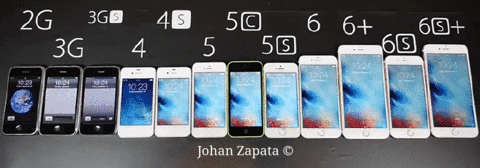iPhone History
Welcome to my absolute guide on Apple's invention and development of their Phone. From the simple initial iPhone to what is today the big sensational Smartphone Device worldwide. The main purpose of this site is to provide information about how the Apple company has been establishing and evolving their iPhone device throughout history.
-
iPhone Developer
Click here for a short summary of the iPhone developer Steve Jobs
CompanyClick here for information about the official company of the iPhone, Apple Inc.
Contact UsClick here for my contact information if you have any additional questions or suggestions for the site.
Additional LinksClick here for links to other sites with more information.
Development and Release Dates
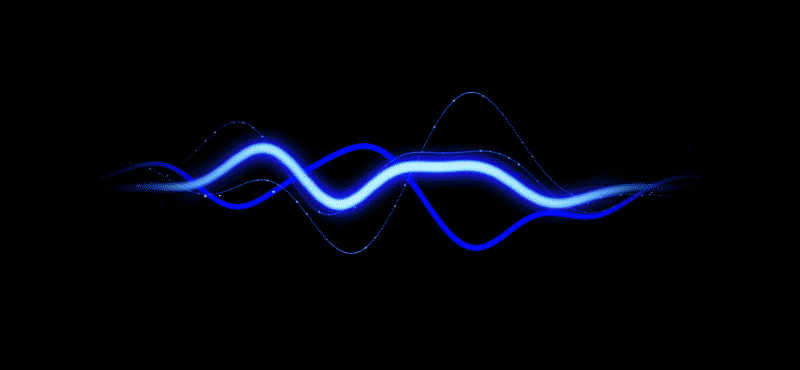
For those who want to have deeper knowledge about iPhones, Apple introduced the initial iPhone back in 2007, instantly obsoleting any different smartphone on the world in any method possible. Over 2 consecutive and successive years, with the iPhone 3G and iPhone 3GS, Apple raised practicality whereas at the same time lowering price, taking the smartphone totally out of the box and creating it popular worldwide. The iPhone 4 and iPhone 4S followed that evolution, helping delivering support across carriers and quicker speeds, higher quality and bigger displays and new, intrusive natural communication. The iPhone 5 took producing to new barriers and also the screen to even new heights, however most significantly it set the stage for what is following next in the iPhone development tale. This is the story of Apple's revolutionary phone. Of Steve Jobs' phone and our phone.
iPhone 2G, iPhone 3G and 3GS

iPhone 2G: - Announced: January 9, 2007 / - Released: June 29, 2007
iPhone 3G: - July 11, 2008
iPhone 3GS: - June 19, 2009
The next-in-line of iPhone 2G was iPhone 3G followed by iPhone 3GS. These fresh released smartphones by the Apple Company reached a wide mass of buyers and satisfied a lot of “Non-Apple Users” to the brand. Both iPhone 3G and 3GS use GPS, unlike the first iPhone 2G. This difference is one of the biggest difference between the 2G and 3G/3GS. The rest is minor internal changes. The 2G internal storage capacity range from 4, 8 and 16 GB. The 3G internal storage capacity range from 8 to 16 GB only, while the 3GS range from 8, 16, and 32 GB only. Face ID, Touch ID and FaceTime are not available in these generations. Bluetooth is availble. Other additional features are: The 2G has an USB power adapter, custom dock, earphones with remote and mic. The 3G has Assisted GPS in addition to prior. The 3GS has voice control, volume controls on earphones in addition to prior.
iPhone 4 and 4s

iPhone 4: - June 24, 2010
iPhone 4s: - October 14, 2011
The iPhone 4 changed everything again and iPhone 4s was the most amazing iPhone yet by this time. Steve Jobs turned his attention to iPhone once again. It has an all-new design. Both iPhone 4 and the 4s use steel to design up the body of the phone and a thin band of steel that wraps the phone on both sides. A difference is that the iPhone 4s have an access panel on the right side and the iPhone 4 does not have an access panel or a SIM card. The internal capacity of the iPhone 4s range from 8, 16, 32, 64 GB and the iPhone 4 range from 8, 16, 32 GB.
iPhone 5, 5c, and 5s
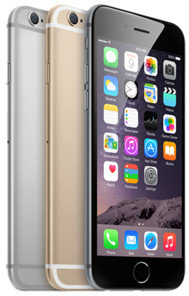
iPhone 5: - September 21, 2012
iPhone 5c: - September 20, 2013
iPhone 5s: - September 20, 2013
From a far distance, these three iPhones may look the same, but if you take a deeper evaluation, their difference becomes really visible. Some external differences is that the iPhone 5s does not have a rounded square icon on the home button like the 5 and 5s. Instead, it has a “Touch ID” sensor that can unlock your phone easily with your fingerprint rather than a passcode. Other difference is that The iPhone 5 and iPhone 5s each have different matte color options, example, the iPhone 5 has either a black glass front and a black aluminum back or a white glass front and a silver aluminum back. The iPhone 5s is also very similar to these features. The iPhone 5c models, by contrast, are offered with a unique steel body design in five vibrant colors: white, pink, yellow, blue, and green.
iPhone 6, 6 Plus, 6s and 6s Plus
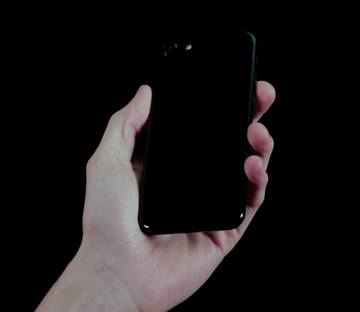
iPhone 6: - September 19, 2014
iPhone 6 Plus: - September 19, 2014
iPhone 6s: - September 25, 2015
iPhone 6s Plus: - September 25, 2015
With a really detailed look at the iPhone 6 or iPhone 6 Plus and a newer iPhone 6s or iPhone 6s Plus it would be easy mistaken between them, as the general designs practically look identical, although the small "S" on the backside of the iPhone 6s models are a huge changer. These four iPhone models walk on thin lines when it comes to design, iPhone 6 and 6 Plus have aluminum cases dominated by the display and softly rounded sides, but the iPhone 6s and iPhone 6s Plus have a slightly less slippery finish, are slightly thicker and heavier. iPhone 6 or iPhone 6 Plus have 8 MG (Megapixels) and the 6s and 6s Plus have 12 MG. Battery Life Differences: 6 and 6 Plus up to 14 Hours on talk time. 6s and 6s Plus up to 24 Hours. The 6 and 6 Plus do not include 3D Touch, Taptic Sensor, Ion-Strengthened Glass unlike the 6s and 6s Plus they do include these features.
iPhone SE
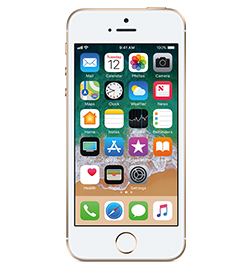
iPhone SE: - March 31, 2016.
The iPhone SE serves as a successor of the iPhone 5S. This iPhone still have the 4-inch screen size and it is really identical to the design of the 5S, but differences are that this includes selected hardware upgrades from the larger iPhone 6S model. In other words, this iPhone is a slightly mixture of the iPhone 5s and the 6s. It also features a new color in Rose Gold along with the standard Space Gray, Silver and Gold. The Internal capacity of this iPhone range from 128 GB, 16 GB, 32 GB, 64 GB and this was the first iPhone to reach 128 GB at this time.
iPhone 7 and 7 Plus
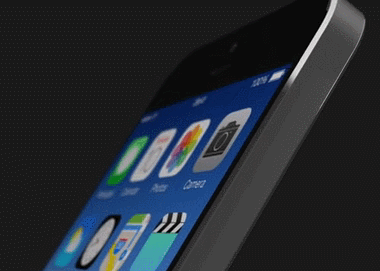
iPhone 7: - September 16, 2016
iPhone 7 Plus: - September 16, 2016
Phone 7 and iPhone 7 Plus next to one another, you will conclude that the iPhone 7 Plus simply is a bigger version of the iPhone 7. Although the size is an important difference between these devices, there are other differences that are less obvious and that still are important, and one of this has to be the headphone jack, this minor change was a bit controvercial since it is the most visible external change that most iPhone users are used to use most of the time. Both the iPhone 7 and iPhone 7 Plus use all aluminum cases with softly rounded sides and are splash, water, and dust-resistant, NOT water-proof, remember. Both models originally were available in five color options; Pink, Gold, Silver, Black, Jet Black. Both iPhones have the same internal storage capacity of 32, 128, 256.
iPhone 8 and 8 Plus
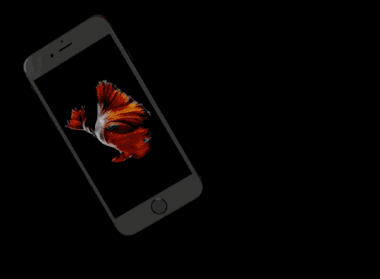
iPhone 8: - September 22, 2017
iPhone 8 Plus: - September 22, 2017
The iPhone 8 and 8 Plus are very familiar handsets. Other than the batteries, the distinctions between these phones are virtually the same. The big change is weight with the iPhone 8 and iPhone 8 Plus over 7% heavier than the iPhone 7 and iPhone 7 Plus. Different to the iPhone X, the iPhone 8 and iPhone 8 Plus contains the same sizeable top and bottom bezels, which means you do still have a home button and Touch ID which has been scrubbed from the iPhone X in favour of Face ID facial recognition. The iPhone 8 and iPhone 8 Plus actually have less color options with just Silver, Gold and Space Grey. The iPhone 8 still doesn’t get the same amount of RAM as the iPhone 8 Plus, but the latter drives a higher resolution display and dual cameras. The iPhone 8 retains a single 12 megapixel wide-angle sensor, while the iPhone 8 Plus adds a 12 megapixel telephoto camera.
iPhone X
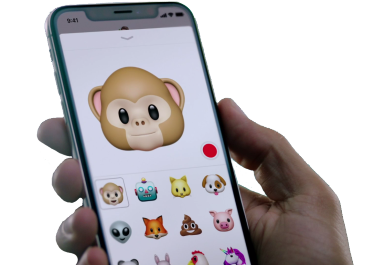
iPhone X: - November 3, 2017
The iPhone X has a 5.8-inch screen compared to the iPhone 8 Plus’ 5.5-inch display. It’s also true that the X’s has a higher resolution. The X uses a narrower aspect ratio, so while it’s longer on the diagonal, you still get more surface area overall. For the first time ever, Apple removed the home button and added a new way to unlock your phone by face recognition, which means that as soon as you are facing your phone, the X reads your face and recognizes you. The iPhone X also has a new feature that is called “Animoji”, which is a really fun feature that lets you animate the emojis by syncing your face on your phone’s screen. Once it's done, all the faces you make, your favorite emoji will make it, making it seems like the emoji came to life.
iPhone, from the simple initial iPhone to what is today the big sensational Smartphone Device worldwide.
Audio: "Finally Yourself" by Neikeion

